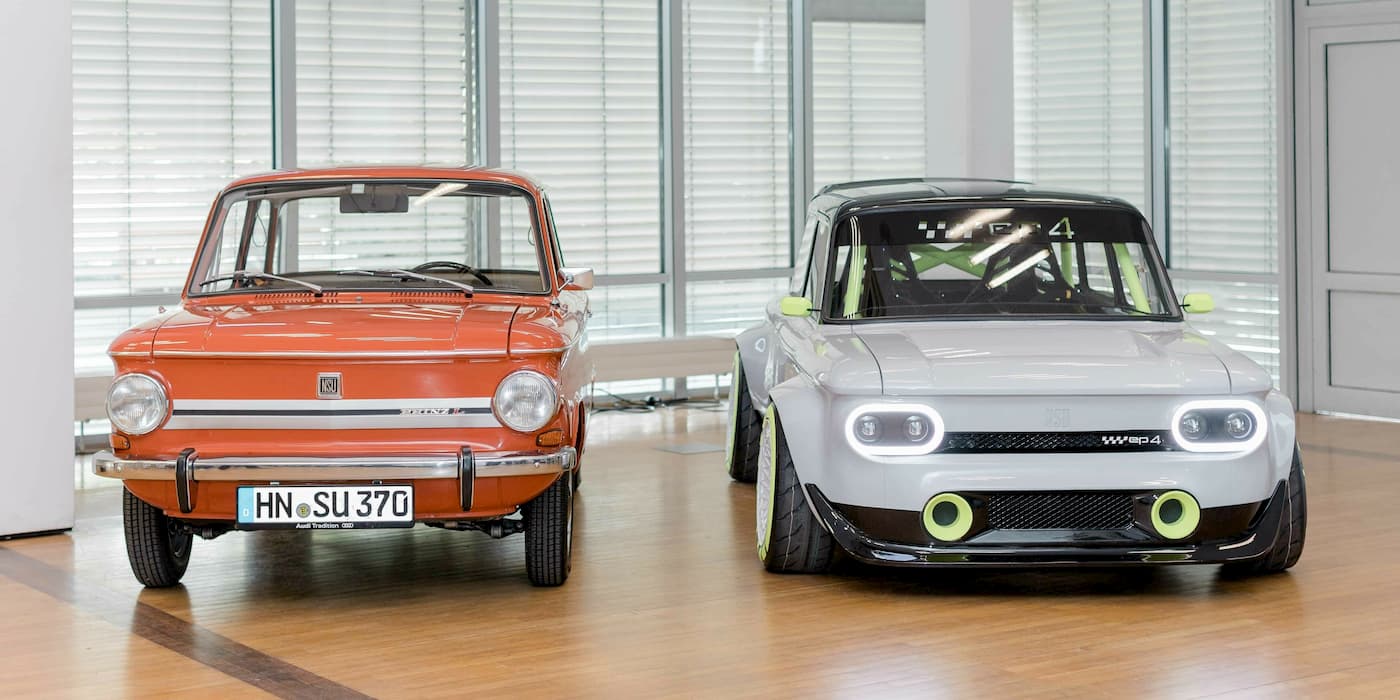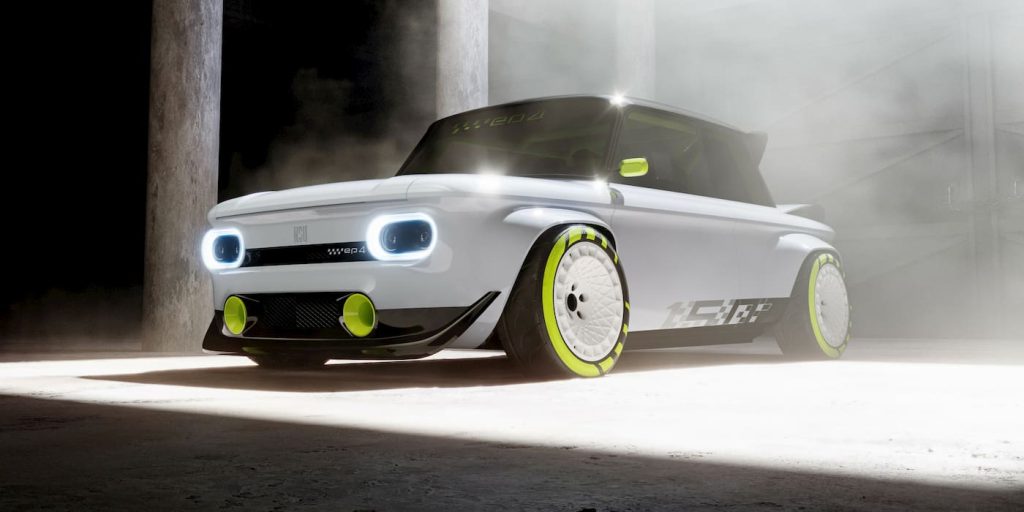
Audi apprentices put an electric spin on an iconic classic car. The team “awoke” an NSU Prinz 4 from 1971 from its sleep, charging it up with technology from the Audi e-tron EV.
In honor of the 150th anniversary of its Neckarsulm site, Audi put its apprentices to the task of restoring a classic car with an all-electric drive train.
The Audi Neckarsulm site has produced several of the brand’s top-selling models and began building its first fully electric model, the Audi e-tron GT quattro, at the end of 2020. Over the years, Audi has transformed the site for the electric era with upgrades, including AI and 3D printing, to enhance efficiency and high-voltage battery production.
To commemorate the anniversary, “We wanted to build a car that was not only fast and looked cool,” explained Dean Scheuffler, an apprentice at the site. The NSU Prinz 4 was the perfect match, as it’s been off the road for decades.
The team revealed the NSU Prinz 4 EV, now called the Audi “EP4,” at Audi family day this week. The “E” stands for electric drive, while the P4 is in honor of the NSU Prinz 4, a classic car produced in Neckarsulm by NSU Motorenwerke from 1961 to 1963.
Meet the NSU Prinz 4 EV, or Audi EP4
Trainees from the mechatronics, bodywork, vehicle construction mechanics, and painting courses unveiled the restored electric car. As the body and paint specialists worked on the chassis and exterior of the vehicle, the mechanics tackled the powertrain, battery, and suspension.

Fitted with a 240 hp (176 kW) electric motor from a 2020 Audi e-tron at the rear, the EV is eight times more powerful than the NSU Prinz 4’s original two-cylinder gas engine that had 30 hp.
In addition, the team placed a battery from the Audi Q7 TFSI e-quattro plug-in hybrid under the front hood, once home to the fuel tank. The EV “breathes” through an open-air intake at the bottom bumper, while heat can escape through the opening in the hood.
The electric classic car’s tailgate can be fixed into a half-open position to highlight the “electric power plan,” reminiscent of the iconic racing cars based on the NSU Prinz 1000.
The NSU Prinz 4 EV conversion took significant modifications to the chassis and body. Its modified floor plan includes an Audi A1 as a base, including the brakes and axles. Adding muscular fenders from a 3D printer, the team mounted the modified (and significantly widened) body on top.

Apprentice auto painter Cynthia Huster explained, “The eye travels with you! We wanted the EP4’s performance to be visible from every angle.”
The inside has been stripped down to the bare essentials, with all other surfaces painted black, common among racing cars. A single-board computer and screen feature the instruments and displays.
Audi says NSU vehicles made history and continue inspiring car enthusiasts to this day. The automaker claimed, “With its charm and electric drivetrain, the EP4 stirs anticipation for the coming all-electric chapters in the continuing story of Audi’s Neckarsulm site.”
The project gave the apprentices a chance to learn more about how electric cars work and the development process while allowing them to showcase their talent.
FTC: We use income earning auto affiliate links. More.




